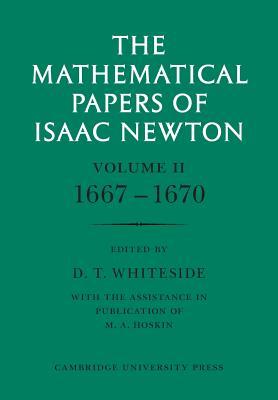The Mathematical Papers of Isaac Newton: Volume 2, 1667-1670
by Isaac Newton
The second volume of Dr Whiteside's annotated edition of all the known mathematical papers of Isaac Newton covers the period 1667-70. It is divided into three parts: Part 1 contains the first drafts of an attempted classification of cubics, together with more general studies on the properties of higher algebraic curves and researches into the 'organic' construction of curves. Part 2 comprises papers on miscellaneous researches in calculus, including the important De Analysi which introduced Newton to John Collins and others outside Cambridge; Newton's original text is here accompanied by Leibniz's excerpts and review, and by Newton's counter review. Part 3 contains Mercator's Latin translation of Kinckhuysen's introduction to algebra, with Newton's corrections and 'observations' upon it, and an account of researches into algebraic equations and their geometrical construction.
BUY NOW
Paperback, 556 pages
Published February 4th 2008 by Cambridge University Press (first published June 1st 1981)
© 2025 Bibleportal.com 版权所有.

Sir Isaac Newton was an English physicist, mathematician, astronomer, natural philosopher, alchemist, and theologian who is considered one of the most influential people in human history.
Newton remains influential to scientists, as demonstrated by a 2005 survey of scientists in Britain's Royal Society asking who had the greater effect on the history of science, Newton or Albert Einstein. Newton was deemed the more influential.[8]
Newton also wrote on Judaeo-Christian prophecy, whose decipherment was essential, he thought, to the understanding of God. His book on the subject, which was reprinted well into the Victorian Age, represented lifelong study. Its message was that Christianity went astray in the 4th century AD, when the first Council of Nicaea propounded erroneous doctrines of the nature of Christ. The full extent of Newton's unorthodoxy was recognized only in the present century: but although a critic of accepted Trinitarian dogmas and the Council of Nicaea, he possessed a deep religious sense, venerated the Bible and accepted its account of creation. In late editions of his scientific works he expressed a strong sense of God's providential role in nature.
... Show more